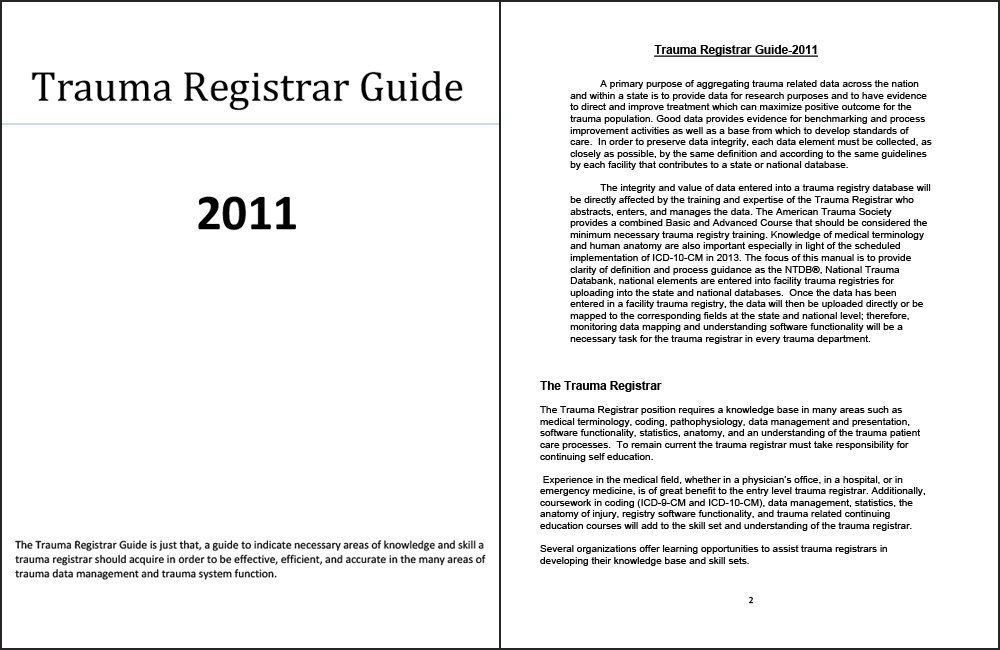
Kansas; Trauma Registrar Guide
A primary purpose of aggregating trauma related data across the nation and within a state is to provide data for research purposes and to have evidence to direct and improve treatment which can maximize positive outcome for the trauma population. Good data provides evidence for benchmarking and process improvement activities as well as a base from which to develop standards of care. In order to preserve data integrity, each data element must be collected, as closely as possible, by the same definition and according to the same guidelines by each facility that contributes to a state or national database.
The integrity and value of data entered into a trauma registry database will be directly affected by the training and expertise of the Trauma Registrar who abstracts, enters, and manages the data. The American Trauma Society provides a combined Basic and Advanced Course that should be considered the minimum necessary trauma registry training. Knowledge of medical terminology and human anatomy are also important especially in light of the scheduled implementation of ICD-10-CM in 2013. The focus of this manual is to provide clarity of definition and process guidance as the NTDB®, National Trauma Databank, national elements are entered into facility trauma registries for uploading into the state and national databases. Once the data has been entered in a facility trauma registry, the data will then be uploaded directly or be mapped to the corresponding fields at the state and national level; therefore, monitoring data mapping and understanding software functionality will be a necessary task for the trauma registrar in every trauma department.
Specifications
- Last Updated: 2011
- Author(s): Susan Mutto RN, MA, CSTR, Patsye Stanley RHIT, CSTR, CAISS
- Category: Registry Basics
- Tags: 2011, English, Kansas Department of Health and Environment
PDF Documents
Please login to access file downloads.
